Senegal. Stories of colours and pains.
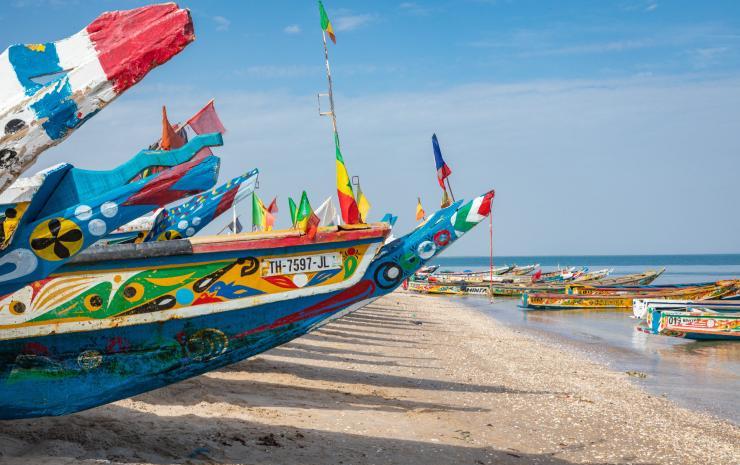
In Saint Louis, in the north of Senegal, boat building is one of the most deeply rooted activities among the population at large.
The bright colours and texture say a lot about their owners, their profession and their goals. Fishermen and migrants share both space
and an uncertain future.
Mamadou is sitting on a wooden bench, looking at his artwork. He gets up, hands smeared with white and red paint and runs a paintbrush along the bottom of one of the boats covered with sketches of the rivers, beaches and sea of Senegal. Although there is still a lot of work of this kind Mamadou is one of the few to practice this craft, and he is fuelled by enthusiasm. “It’s an honour to be a painter. There are no more than ten of us left in this city,” he says proudly.
His family has lived in St Louis for over fifty years. His father was also a boat painter. When he was younger, Mamadou said he wanted to become like his father. “It’s a very common profession in my family; almost all of us did the same thing,” he adds. Despite efforts to continue the family tradition, Mamadou insists that wages are still low. “I would like to continue painting, but I wouldn’t be able to feed myself,” he explains. The young man says that it is usually necessary, first of all, to negotiate the price with the boat builder and, in this tug-of-war, the price does not exceed around 150 euros per boat. “Sometimes it takes up to three weeks to paint an entire boat. It depends on the weather, but also on the paint available,” he says.
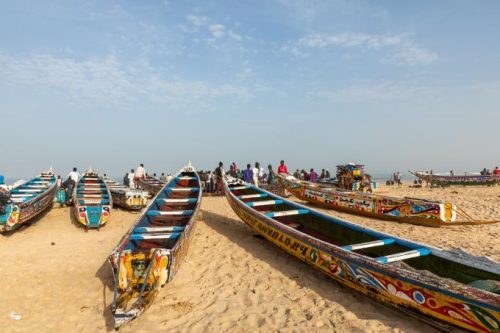
To make a boat you need a special wood and it is found more than 400 kilometres away, near the border with Guinea Bissau. 123rf
To make a boat you need a special wood and it is found more than 400 kilometres away, near the border with Guinea Bissau. It is from there that the main material for the boats that Mamadou paints comes: teak wood from the Casamance region, one of the richest in vegetation and
forests in the whole country.
Teak wood, also known as a luxury wood, is so durable that it is in demand by builders in Saint Louis, one of the country’s busiest fishing spots. “Casamance wood can take days or weeks to get here, and when it arrives, not everyone can afford it,” says Sidi, one of the locals surrounding Mamadou’s canoe.
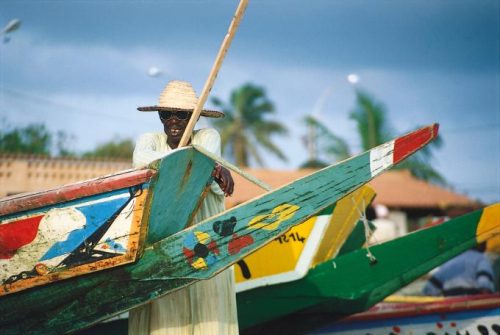
When boats are used to transport migrants, they are usually using old boats that have lost their colour and are restored for that last journey. File swm
After buying the lumber and paint, construction of the canoe begins. On the banks of the port, the noise of the hammers merges with that of the waves. A group of young men fix rusty bolts to one of the precious wooden planks. From bottom to top, stylizing the two ends, bow and stern, they are working on one of the many boats stranded on the beach in this corner of West Africa. The boats may all seem similar but in reality, they are not. The construction or reconditioning processes are different, depending on the intended use of each vessel.
In those used only for fishing, wooden planks are arranged horizontally so that the crew can sit on them. In this case, fishermen go out to sea with brand new boats, with new teak wood and shiny paint. When boats are used to transport migrants, they are usually using old boats that have lost their colour and are restored for that last journey. The owners are looking for boats with deeper hulls, so they can carry more people on one of the deadliest migratory routes in the Atlantic.
Display items and symbols
Ibra Niang has lived in Lepe (Huelva, Spain) since 2019. He is a 36-year-old Senegalese migrant who left the country because a physical disability in his leg and the shortage of fish prevented him from working. He was a fisherman and a painter, just like Mamadou. Ibra keeps his artistic talent alive and sells his artwork. On the canvas, on a white wooden easel, there is no shortage of colours. His palette, like Mamadou’s, is stained with red, yellow, green and white, the colours he says are the most popular among Senegalese boatmen. “Red symbolizes spilled blood; yellow is the symbol of gold and success; green is the colour of hope, while white is the light that accompanies us”, he explains. Among the dozens of moored boats one can see some white stars positioned at the highest points. Almost as if to preside over the exit into the sea.
“When there is no star, the owner of the boat wants to highlight the colours of Pan-Africanism. On the other hand, the star highlights the Senegalese flag,” says the artist.
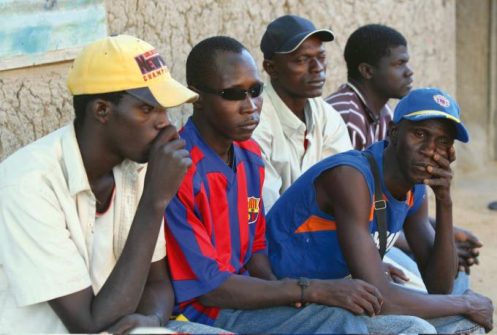
Young people, waiting to go to Europe. File swm
Thousands of miles away, in Saint Louis, boats travel along the canal until they reach the open sea in what becomes a parade of art and colour. The United States flag is wrapped around the bow of a young man’s boat as he sets off alone. Then, amidst applause and laughter, a group of fishermen point to the logo of the Chicago Bulls, Chicago’s professional basketball team. There is not only praise for the United States. Every now and then there is an illustration with allusions to Europe, particularly Spain or France. “Boat owners paint these flags because that’s where they want to travel or where they dream of living in the future,” Niang says.
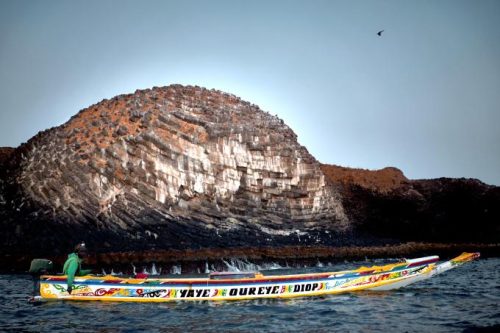
Fishermen go out to sea with brand new boats, with new teak wood and shiny paint. Photo: Michele Cattani
Niang remembers his crossing to reach Spain: “I didn’t travel on a boat like the ones you see in Senegal. I started my journey in Morocco. In a plastic boat, with no colours”, says Niang. The young man arrived in Spain in 2019, together with 32 other people. His brother welcomed him to the peninsula. Today he dedicates himself to art and exhibits paintings that he sells in Lepe, in the province of Huelva or in different parts of the country. He also does so online using his website. He is one of the lucky ones who managed to cross along one of the deadliest migratory routes and now his dream is coming true. In his village, a few meters from Mamadou, dozens of young people gather on the beach of Ndar Toute. Some of the canoes that sail the Atlantic towards the Canary Islands depart from there, all looking for a better life.
“It’s incredible that on the boats I paint there are so many young people, women and children who want to get to Europe. I will never understand it,” says Mamadou. Last year, according to the United Nations High Commissioner for Refugees (UNHCR), around 186,000 people arrived by sea in southern Europe – Italy, Greece, Spain, Cyprus and Malta. The data also indicate that more than 2,500 migrants have died or disappeared in the Mediterranean in the same period. (Open Photo: Traditional painted wooden fishing boat. 123rf)
Soraya Aibar



